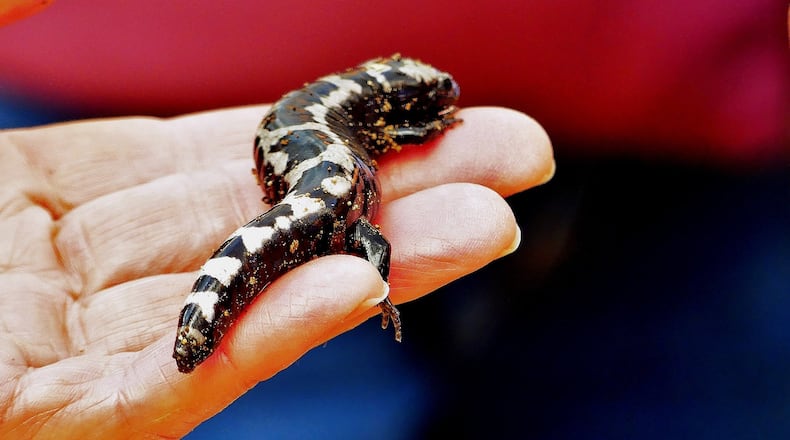On a chilly morning last week, we were at the Sandy Creek Nature Center in Athens doing some “herping,” or searching for reptiles and amphibians. The term comes from the word herpetology, which means the study of the creatures.
Our leader was Dr. Carlos Camp, a biology professor at Piedmont College in Demorest and a renowned herpetologist. He has expertise in salamanders, which were the focus of our search.
Georgia is a great place to look for salamanders, which, like frogs, are amphibians, Camp noted. Home to nearly 60 salamander species, Georgia is one of the world’s hot spots for the animals. About a dozen of those species probably occur within the rolling hardwood forests, ponds and streams of the Sandy Creek Nature Center, Camp said.
Salamanders, though, while widespread, are extremely shy and seldom seen. They tend to take shelter beneath rotting logs and moss-covered rocks and in other secretive spots. So, to find the salamanders, Camp and two aides constantly turned over rocks and logs as we walked through the forest.
Our first species of the day was a beautiful marbled salamander ensconced under a rotted log. About three to five inches long, marbled salamanders have shiny black bodies with white (for males) or silvery-gray (for females) markings.
It would be one of only two salamander species found during our herping day. The other was an Eastern newt, a small salamander with a golden belly, which Camp, using a a dip net, scooped out of a small pond.
In a larger pond, he and his aides also netted tiny marbled salamander larvae, about the size of tadpoles with delicate gills poking out from behind their heads.
Why the interest in salamanders? A major reason is that they are very sensitive to changes in the environment and thus serve as sentinels for the health of a forest, according to the book “Amphibians and Reptiles of Georgia.”
IN THE SKY: From David Dundee, Tellus Science Museum astronomer: Spring officially begins on Tuesday at 12:15 p.m. The moon is new today. Venus and Mercury are low in the west just after dark. Venus will appear near the crescent moon on Sunday. Jupiter rises out of the east just before midnight. Mars and Saturn rise out of the east about an hour after midnight.
About the Author
Keep Reading
The Latest
Featured

